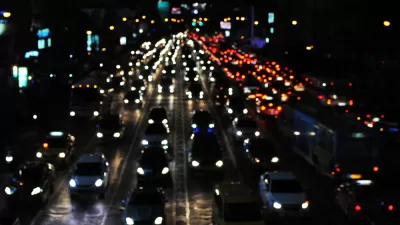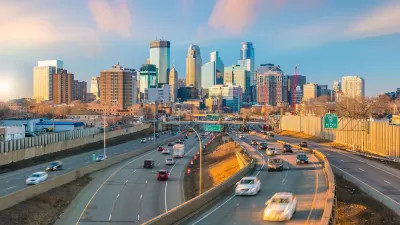Cities with rapidly growing populations and inadequate public transit systems are seeing more gridlock despite changes in commuting patterns and the rise of remote work.

Despite a slight reduction in traffic congestion in most U.S. cities since the start of the pandemic, roads in some of the country’s fastest-growing cities are experiencing more traffic. As Konrad Putzier explains in the Wall Street Journal, “Local roads, built decades ago for a much smaller population, are struggling to accommodate the new reality.”
The article details the potential losses caused by congestion, arguing that gridlock can make regions less productive by discouraging new employers and driving up housing costs in the denser areas nearer to city cores. A recent blog post by Todd Litman argues that congestion costs are not as high as estimated by some, and that other factors should more strongly affect transportation planning decisions.
Putzier’s article points to average traffic speeds as one measure of congestion, particularly in residential areas. However, Putzier does not mention whether traffic calming or other road safety initiatives could have contributed to slower speeds, which are shown to reduce the chance of fatal crashes. It even highlights one Miami-area driver who “said she started driving an SUV to get a higher-perched view of the gridlock in front of her.” Meanwhile, larger SUVs are contributing to higher rates of pedestrian deaths.
Putzier does note that improving public transit, which is often lacking in many Sunbelt cities, can alleviate congestion and make housing more accessible to more residents. However, he highlights complaints that “You’ll see an extra lane here or there, but by and large it just can’t keep up” without acknowledging that this is a tacit admission that building more roadways only induces traffic demand.
FULL STORY: Sunbelt Traffic Jams Are Frustrating Drivers and Threatening Growth

Alabama: Trump Terminates Settlements for Black Communities Harmed By Raw Sewage
Trump deemed the landmark civil rights agreement “illegal DEI and environmental justice policy.”

Study: Maui’s Plan to Convert Vacation Rentals to Long-Term Housing Could Cause Nearly $1 Billion Economic Loss
The plan would reduce visitor accommodation by 25% resulting in 1,900 jobs lost.

Planetizen Federal Action Tracker
A weekly monitor of how Trump’s orders and actions are impacting planners and planning in America.

Wind Energy on the Rise Despite Federal Policy Reversal
The Trump administration is revoking federal support for renewable energy, but demand for new projects continues unabated.

Passengers Flock to Caltrain After Electrification
The new electric trains are running faster and more reliably, leading to strong ridership growth on the Bay Area rail system.

Texas Churches Rally Behind ‘Yes in God’s Back Yard’ Legislation
Religious leaders want the state to reduce zoning regulations to streamline leasing church-owned land to housing developers.
Urban Design for Planners 1: Software Tools
This six-course series explores essential urban design concepts using open source software and equips planners with the tools they need to participate fully in the urban design process.
Planning for Universal Design
Learn the tools for implementing Universal Design in planning regulations.
Caltrans
Smith Gee Studio
Institute for Housing and Urban Development Studies (IHS)
City of Grandview
Harvard GSD Executive Education
Toledo-Lucas County Plan Commissions
Salt Lake City
NYU Wagner Graduate School of Public Service





























